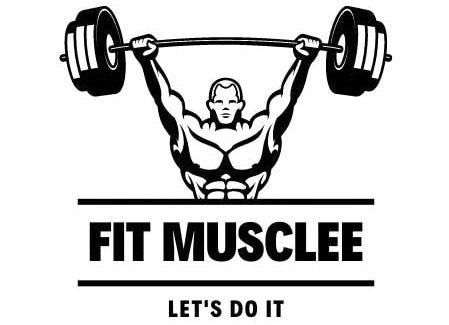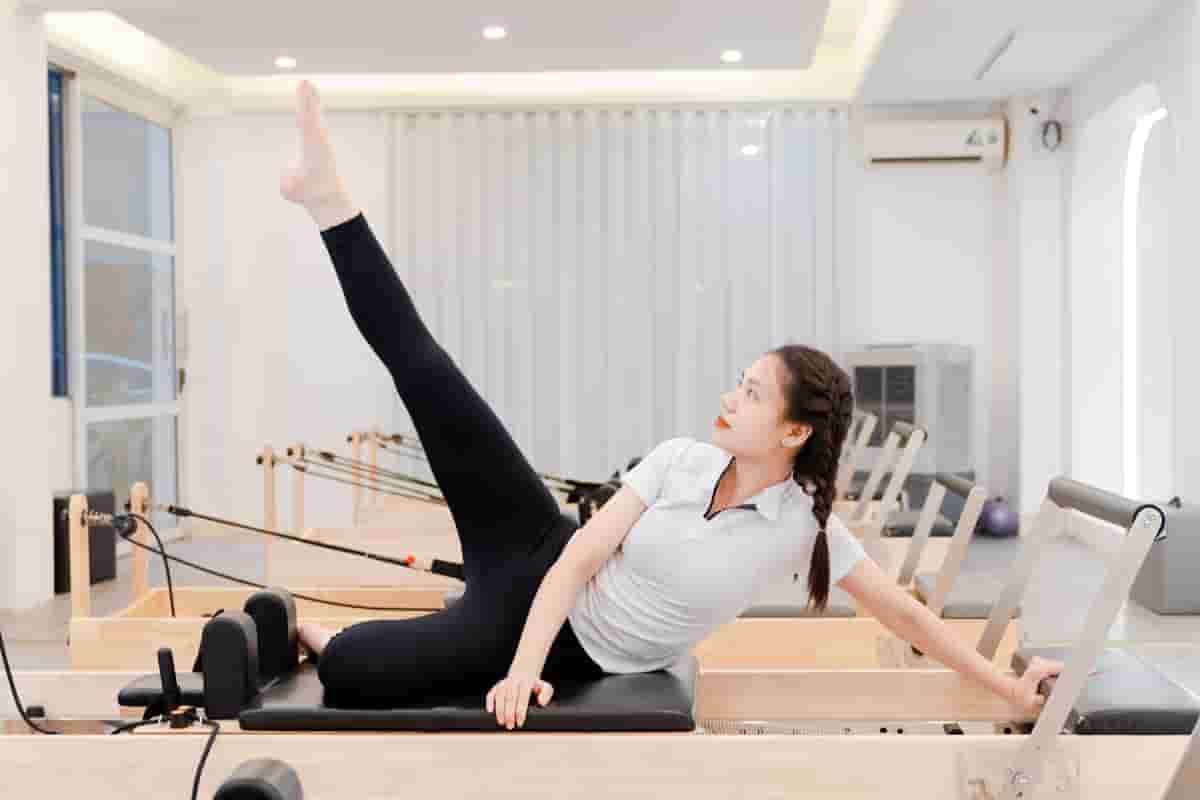Here is your complete guide to single leg stretch pilates.
Introduction to Single Leg Stretch Pilates
The single leg stretch Pilates is a cornerstone exercise in Pilates practice that combines core strengthening with coordination, flexibility, and balance. Whether you are a beginner or an advanced practitioner, mastering this exercise will enhance your overall Pilates routine and contribute to better posture, spinal stability, and endurance. This detailed guide will walk you through everything you need to know about the single leg stretch Pilates—from its benefits to detailed steps, common mistakes, modifications, muscles involved, and how to incorporate it into your workouts.
The single leg stretch Pilates exercise is a popular and effective move that targets the core muscles deeply while engaging the hips and legs. This exercise is widely used in mat Pilates routines for its ability to build endurance, coordination, and spinal stability. In every Pilates routine, the single leg stretch Pilates is essential because it focuses on activating the abdominal muscles while promoting controlled breathing and precision in movement.
If you are looking to strengthen your core, improve coordination, and enhance your Pilates workouts, the leg stretch Pilates is a foundational exercise you cannot ignore. Incorporating this exercise into your daily Pilates practice can help reduce the risk of injury by improving posture, supporting the spine, and promoting muscular balance.
In this article, we will explore the precise technique to perform the single leg stretch Pilates, explain the benefits, highlight common mistakes, provide modifications for all levels, and delve into the anatomy behind the movement. By the end, you’ll be well-equipped to practice this move safely and effectively.
What Is Single Leg Stretch Pilates?
The single leg stretch originated from the classic Pilates mat sequence developed by Joseph Pilates. It is part of the Abdominal Series and serves as a dynamic core exercise that challenges your ability to maintain control and coordination throughout the movement.
In this exercise, you lie on your back with your knees bent and then alternate extending one leg out while pulling the other towards your chest, all while keeping your head and shoulders lifted off the mat. This simultaneous opposing movement of legs combined with a stable torso trains your abdominal muscles intensively.
The movement also emphasizes proper breathing, typically exhaling while pulling the knee in and inhaling during the leg switch. This breathing control helps maintain core engagement, oxygenates the muscles, and supports smooth transitions.
The single leg stretch builds foundational strength for more advanced Pilates moves and improves body awareness by requiring constant attention to pelvic positioning, spinal alignment, and breath rhythm.
Benefits of Single Leg Stretch Pilates
The leg stretch provides numerous physical and mental benefits, making it a powerful exercise for Pilates practitioners of all levels:
- Core Strength: It targets the rectus abdominis, obliques, and deeper core stabilizers like the transversus abdominis, creating a strong core that supports daily activities and reduces injury risk.
- Spinal Stability and Alignment: By keeping the lower back pressed into the mat and maintaining a neutral pelvis, it strengthens the muscles responsible for spinal support and posture correction.
- Hip Mobility and Flexibility: The alternating leg extension encourages flexibility and mobility in the hip flexors and surrounding muscles.
- Coordination and Endurance: The rhythmic leg switches improve neuromuscular coordination and endurance, fostering body control.
- Neck and Shoulder Strength: Holding the head and shoulders lifted works the neck flexors, creating endurance that helps prevent strain in everyday activities.
- Mental Focus and Breath Awareness: The linked breath and movement practice enhances concentration and promotes mindful exercise.
| Benefit | Description |
|---|---|
| Strengthens Core | Engages multiple abdominal muscles deeply |
| Improves Spinal Support | Encourages neutral spine and pelvic positioning |
| Enhances Hip Flexibility | Stretches and mobilizes hip flexors |
| Builds Coordination | Improves timing and rhythm between limbs |
| Promotes Breath Control | Synchronizing breath with movement enhances focus |
Step-by-Step Guide to Performing Single Leg Stretch Pilates
Follow this detailed step-by-step guide to ensure you perform the single leg stretch with correct form and breathing:
| Step | Movement Description | Key Tips |
|---|---|---|
| 1 | Lie on your back with knees bent to tabletop position. | Keep lower back pressed into mat; relax neck. |
| 2 | Curl your head, neck, and shoulders off the floor. | Gaze toward your knees to avoid neck strain. |
| 3 | Place your hands on the outside of your lower leg (ankle and knee). | Engage your core before starting movement. |
| 4 | Exhale and extend your right leg out at about 45 degrees while pulling your left knee toward your chest. | Keep the extended leg long and toes pointed. |
| 5 | Inhale as you switch legs, pulling the right knee in and extending the left leg. | Keep movements smooth and controlled. |
| 6 | Alternate legs for 8 to 12 repetitions with steady breathing. | Focus on keeping hips stable, not tilting. |
Breathing Pattern
- Exhale as you pull the knee in toward the chest.
- Inhale while switching legs and extending the opposite leg.
Common Mistakes and How to Avoid Them in Single Leg Stretch Pilates
Many practitioners unknowingly make errors that reduce the effectiveness of the single leg stretch Pilates and increase injury risk. Here are five common mistakes and how to avoid them:
- Pelvic Tilting Forward or Backward: Excessive pelvic movement causes strain on the lower back rather than engaging the core. Keep your pelvis neutral by pressing your lower back flat into the mat.
- Neck Strain: Pulling the chin too close to the chest puts unnecessary tension on the neck. Maintain a slight length in the neck and focus your gaze forward or toward the knees.
- Insufficient Leg Extension: Not fully extending the leg reduces the stretch and engagement of hip flexors. Aim to extend each leg at approximately a 45-degree angle.
- Uncoordinated Arm and Leg Movement: Mistiming the switch can disrupt balance and flow. Practice slowly to perfect smooth arm-leg coordination.
- Holding Breath or Poor Breathing Pattern: Forgetting to breathe or improper breathing impacts endurance. Use the exhale-pull, inhale-switch rhythm consciously.
| Mistake | Cause | Correction |
|---|---|---|
| Pelvic tilting | Weak core or improper form | Press lower back into mat |
| Neck tension | Chin tucked too far | Lengthen neck, gaze to knees |
| Leg not fully extended | Lack of focus or flexibility | Extend leg to 45 degrees or more |
| Poor coordination | Rushing movement | Slow down, emphasize arm-leg timing |
| Holding breath | Concentration lapse | Synchronize breathing with movement |
Modifications and Variations of Single Leg Stretch Pilates
Depending on your fitness and Pilates experience, modifications can help you perform the leg stretch Pilates safely while still gaining the benefits. Here are several options:
| Modification | Description | Benefit |
|---|---|---|
| Head and Neck Support | Keep the head on the mat instead of curling up | Reduces neck strain for beginners |
| Higher Leg Extension | Extend the leg at 60 degrees rather than lower | Easier on the core, better for beginners |
| Slow Controlled Pace | Move legs slower with focus on breath and control | Improves muscle endurance and form |
| Pillow Under Head | Place a small pillow under the head for comfort | Supports neck, reduces fatigue |
| Magic Circle Assistance | Hold a resistance ring between hands and legs | Adds resistance, increasing strength |
For those with neck or back issues, keeping the head supported while focusing on leg movement is a safer alternative. Modifying the leg extension height can accommodate hip or hamstring flexibility concerns.
Muscles Worked and Anatomy During Single Leg Stretch Pilates
The leg stretch Pilates engages a wide variety of muscles, supporting core strength and body control. Below is a table summarizing key muscle groups and their functions in this exercise:
| Muscle Group | Function in Single Leg Stretch |
|---|---|
| Rectus Abdominis | Core flexion and spinal stabilization |
| External and Internal Obliques | Rotation and lateral stabilization of the torso |
| Transversus Abdominis | Deep core stabilization, abdominal wall support |
| Iliopsoas (Hip Flexors) | Leg extension and hip mobility |
| Rectus Femoris | Extending the knee |
| Gluteal Muscles | Pelvic stability and hip extension |
| Neck Flexors | Supporting head lift during the exercise |
| Lower Back Muscles | Maintaining spinal alignment and counteracting core work |
Understanding the interplay of these muscles helps ensure you activate the right areas during the movement, which improves efficiency and reduces injury risk.
How to Incorporate Single Leg Stretch Pilates into Your Routine
To maximize the benefits of the leg stretch Pilates, incorporate it into your Pilates or core workout routine as follows:
- Frequency: 3 to 5 times a week for consistent core strengthening.
- Sets and Repetitions: Beginners should aim for 2-3 sets of 8-10 repetitions per leg. Intermediate and advanced practitioners can perform 3-4 sets of 12-15 repetitions.
- Workout Pairings: Combine with other Pilates exercises such as the double leg stretch, criss-cross, and the hundred to build a comprehensive core-focused session.
- Progressions: Gradually increase the speed or lower the extended leg closer to the floor to increase difficulty.
- Listen to Your Body: Modify or rest if you feel strain in your neck or lower back.
Incorporating single leg stretch Pilates in balanced sessions ensures gradual progress in core strength, coordination, and muscular endurance.
FAQs about Single Leg Stretch Pilates
Here are answers to common questions about the single leg stretch Pilates, based on frequently asked queries:
Is Single Leg Stretch Pilates good for beginners?
Yes. Beginners can perform it with head support and less leg extension while focusing on correct form and breath.
How many repetitions should I do?
Start with 2-3 sets of 8-10 reps per leg. Increase gradually as you gain strength.
Can the Single Leg Stretch Pilates help with lower back pain?
When done correctly with pelvis neutral, it strengthens the core which supports the lower back and can reduce pain.
What should I avoid while doing this exercise?
Avoid pelvic tilting, neck strain, holding your breath, and rushing the movements.
Can I perform this if I have neck issues?
Yes, but keep your head supported on the mat or use a small pillow.
Read Also: Pre Workout Without Beta Alanine.
Should the leg be fully straight during extension?
The leg should be extended but slightly bent at the knee to avoid strain unless you are more advanced.
Read Also: BCAA vs Creatine.
Conclusion
The single leg stretch Pilates is an essential and highly effective exercise for building core strength, enhancing coordination, and improving overall Pilates performance. By mastering the proper technique and understanding the muscles involved, you can safely add this move to your routine to support spinal stability, hip flexibility, and endurance.
Read Also: Dolphin Yoga Position.
Remember to focus on your breath, maintain neutral pelvic alignment, and avoid common mistakes such as neck strain or poor coordination. Whether you are a beginner or an advanced Pilates practitioner, modifications and progressions are available to make this exercise both accessible and challenging.
Read Also: Yoga Position Crossword Clue.
Commit to consistent practice of the leg stretch Pilates and experience improved posture, increased core strength, and a mind-body connection that defines Pilates.
Read Also: Reverse Prayer Position.

